C7 ZR1 Heat Issues Thread - Let's get into this!
#1
Safety Car


Thread Starter
Member Since: Jan 2012
Location: Cin City
Posts: 4,885
Received 481 Likes
on
317 Posts
St. Jude Donor '14

So, as a lot of you have seen and even apparently Randy Probst said, the C7 ZR1's (esp autos) still have heat problems! The triple radiators, triple heat exchangers, and double hx pumps are certainly a vast improvement over the previous LT4, but this car is still hot and the auto transmissions are even more problematic on the road courses it seems. I noticed very early in ownership that the LT5 Supercharger although massive, gets hot and stays HOTTER... up to TWO HOURS after! The high strung LT4 made 10 PSI of boost and churned out 650HP, while the LT5 moves 52% more air per revolution, makes 6 PSI more boost, and that equates to an extra 105 HP. There are a few different reasons for this and having taken more Physics and Thermodynamics in college than I would've liked at the time LOL, you'll learn there are three types of heat transfer - Conduction, Convection, and Radiation. The most simplistic ways to relate this to modern day application is cooking. You have boiling on a stove top which is Conduction, standard oven cooking which is Convection, and lastly the microwave oven with Radiation. I'll start by discussing the combustion engine and then delve into the application of each in the automotive industry.
As commonly stated, the internal combustion engine is really nothing more than a giant air pump, that is quite a unique example of the three heat transfer methods in the process, originating within the cylinder during the combustion process. Heat originates in the cylinders with the injection of fuel mixing with air plus the ignition with spark. This explosion forces the piston up and down on the connecting rod, which turns the crankshaft, and thus the drive-train to rotate the wheels and move the vehicle. In this process, that heat has to go somewhere or the engine parts would get too hot and fatigue in a variety of ways. So coolant passages in the cylinder heads and block channel coolant, which has a molecular compound with a higher boiling point than water to absorb this heat, and removes it from the engine eventually. The engine uses it's own heat created to bring the components up to a safe operating temperature by keeping the coolant thermostat closed. This keeps a smaller amount of coolant in the heads and block to heat up more quickly and once it's reached the mechanical thermostat's "open" temperature, the thermostat will open to begin the heat transfer process so the engine does not overheat. Most late model vehicles opt to use this same coolant to cool the engine oil as well, which obviously lubricates the engine, and while this works to an extent, track racers with extended periods of wide open throttle often will realize that some systems does not hold enough BTU capacity, to stave off overheating of the entire system. BTU is a unit of measurement for energy and one BTU is equal to the amount of energy used to raise the temperature of one pound of water one degree Fahrenheit. I will explain in greater detail below; however, in Lehman's terms, the fluid absorbs the heat to cool the engine, passes through the radiator up front and in a perfect world, the incoming air will remove the heat from the coolant before returning it back to the engine to absorb more heat. The amount of fluid in the system is as important as the efficiency of the radiator used to exchange it. This was a common problem on the C7 LT1s and C7 Z06s; however, a general lack of understanding lead most C7 owners to believe their car was flawed and could potentially overheat, when in reality it takes a fairly aggressive, experienced driver with a good track session to fatigue the cooling system.
A liquid-cooled Supercharger like you find on the late model Corvettes, Camaros, and CTS V's work in the same manner as the engine as far as cooling, only they suffer from additional heat sources, as they create heat by compressing air or creating "boost" and they also pick up heat from sitting on the hot engine as well as having hot radiator air blowing on them too. Engine coolant systems and Supercharger coolant systems are kept separate as the coolant taxed with absorbing the combustion temps from engines are always hotter than the coolant absorbing heat from the compressed air from Superchargers, and thus they cannot share their coolant capacity. We have excelled for years with our heat exchangers like the WEAPON-X Track Attack, simply because we understand that there is an art to making them efficient and although "bigger" isn't always "better", the fact that a thick heat exchanger is less efficient due to the impedance of air freely flowing through them at lower speeds, is also a myth. We take into account the area of the fresh air across them, the fin density vs. the thickness, the size of the tubes going through the cores, the total capacity of the system, single vs. double pass of the coolant, and ultimately the volume of fluid in the "exchange zone" at any given time vs. the airflow at various speeds with respect to the amount of turbulence that can be created as the air passes through the heat exchanger, as the more turbulent air can extract more heat than just a straight pass through of air going around the tubes. We started with our Track Attack heat exchangers for the CTS Vs in 2010 and have been creating phenomenal cooling products ever since! But enough of my shameless plug LOL, on to the meat and potatoes.
As commonly stated, the internal combustion engine is really nothing more than a giant air pump, that is quite a unique example of the three heat transfer methods in the process, originating within the cylinder during the combustion process. Heat originates in the cylinders with the injection of fuel mixing with air plus the ignition with spark. This explosion forces the piston up and down on the connecting rod, which turns the crankshaft, and thus the drive-train to rotate the wheels and move the vehicle. In this process, that heat has to go somewhere or the engine parts would get too hot and fatigue in a variety of ways. So coolant passages in the cylinder heads and block channel coolant, which has a molecular compound with a higher boiling point than water to absorb this heat, and removes it from the engine eventually. The engine uses it's own heat created to bring the components up to a safe operating temperature by keeping the coolant thermostat closed. This keeps a smaller amount of coolant in the heads and block to heat up more quickly and once it's reached the mechanical thermostat's "open" temperature, the thermostat will open to begin the heat transfer process so the engine does not overheat. Most late model vehicles opt to use this same coolant to cool the engine oil as well, which obviously lubricates the engine, and while this works to an extent, track racers with extended periods of wide open throttle often will realize that some systems does not hold enough BTU capacity, to stave off overheating of the entire system. BTU is a unit of measurement for energy and one BTU is equal to the amount of energy used to raise the temperature of one pound of water one degree Fahrenheit. I will explain in greater detail below; however, in Lehman's terms, the fluid absorbs the heat to cool the engine, passes through the radiator up front and in a perfect world, the incoming air will remove the heat from the coolant before returning it back to the engine to absorb more heat. The amount of fluid in the system is as important as the efficiency of the radiator used to exchange it. This was a common problem on the C7 LT1s and C7 Z06s; however, a general lack of understanding lead most C7 owners to believe their car was flawed and could potentially overheat, when in reality it takes a fairly aggressive, experienced driver with a good track session to fatigue the cooling system.
A liquid-cooled Supercharger like you find on the late model Corvettes, Camaros, and CTS V's work in the same manner as the engine as far as cooling, only they suffer from additional heat sources, as they create heat by compressing air or creating "boost" and they also pick up heat from sitting on the hot engine as well as having hot radiator air blowing on them too. Engine coolant systems and Supercharger coolant systems are kept separate as the coolant taxed with absorbing the combustion temps from engines are always hotter than the coolant absorbing heat from the compressed air from Superchargers, and thus they cannot share their coolant capacity. We have excelled for years with our heat exchangers like the WEAPON-X Track Attack, simply because we understand that there is an art to making them efficient and although "bigger" isn't always "better", the fact that a thick heat exchanger is less efficient due to the impedance of air freely flowing through them at lower speeds, is also a myth. We take into account the area of the fresh air across them, the fin density vs. the thickness, the size of the tubes going through the cores, the total capacity of the system, single vs. double pass of the coolant, and ultimately the volume of fluid in the "exchange zone" at any given time vs. the airflow at various speeds with respect to the amount of turbulence that can be created as the air passes through the heat exchanger, as the more turbulent air can extract more heat than just a straight pass through of air going around the tubes. We started with our Track Attack heat exchangers for the CTS Vs in 2010 and have been creating phenomenal cooling products ever since! But enough of my shameless plug LOL, on to the meat and potatoes.

The following 2 users liked this post by Ben@WeaponX:
Corvette_Nut (09-22-2018),
rb185afm (12-01-2018)
#2
Safety Car


Thread Starter
Member Since: Jan 2012
Location: Cin City
Posts: 4,885
Received 481 Likes
on
317 Posts
St. Jude Donor '14

If you recall, there are three types of heat transfer sources:
1. Conduction is the transfer of heat from one object to another through direct contact, essentially. This is a very common cause of heat transfer in an engine as the block is the main heat source with the cylinders of the engine containing the combustion heat, which is transferred to the block, coolant, etc and also forced induction systems like Superchargers and Turbochargers, as physics will tell you that when you compress air, a byproduct is heat. So, anything that is in direct contact and ultimately indirect contact with the source of the heat will attempt to equalize the temperature as the molecules that are more dense begin to heat up and spread further apart causing the object to expand, defining thermal expansion. Different molecular structures allow for various rates of change, as well as overall equalization of heat transfer. For example, while aluminum is frequently used more and more due to it's light weight, cost, and strength, it conducts heat very easily vs. say, carbon, which has a more expensive manufacturing process, and is less prone to heat transfer as well. Simply put, there are some materials that absorb heat very quickly and others that essentially deter the transfer. We have made some very unique products to insulate the engine heat from the superchargers and manifolds, for example. By keeping the conductive heat off of the supercharger/manifold, we effectively reduce the Convection process of the incoming compressed hot air from getting hotter with the heat from the walls of the manifold too.
2. Convection is the heat transfer through fluids such as a liquid or gas, as molecules of warmer areas move to cooler areas and thus unheated molecules rise into the areas closest to the source of the heat as they replace the molecules previously there. Think of heavier weight viscosity oils that are recommended by GM for the C7 ZR1 for track racing, because as the molecules expand, the fluid becomes less dense, and can thus breakdown more easily causing engine failure. So, the lower the oil weight, the less dense, and more easily broken down as the molecules move more quickly, thus expanding from the heat. Another example of this is the heat exchanged through the radiator via airflow that is pushed into the engine compartment. The heat from the engine block is picked up through conduction by the coolant passing through, pushed around to the front of the car via a mechanical water pump, then the incoming air picks up the heat via convection to cool the coolant before it is returned to the block to pickup more heat. The hot air then passes into the engine compartment and can transfer that back to other engine parts. The most common problem with this is the intake tube, as this is usually located right behind the radiator. Not only does this heat up the air moving through the tube, but this also heats up the Mass Air Flow sensor (MAF), which more often than not, has an Intake Air Temp (IAT) sensor in it that is directly related to the engine's power output through timing AKA spark and on the LT Gen 5 torque based cars derived from the earlier Bosch ECUs as far as I can tell. So, you want to offer your engine as much BTU cooling "power" as possible with the best radiator you can afford, like a Dewitts radiator, but also need to make sure your engine bay has proper ventilation. The C7 ZR1's engine bay is interesting, as the top duct from the radiator is larger to extract the heat from the upper portion; however, the fan is mounted below this duct and pushes the hot air below this duct directly onto the air intake, engine, supercharger, etc to be evacuated underneath the vehicle with minimal amounts exhausted through the fender vents. I have also tested the engine bay for pressure, and the engine bay does not vent the air to the atmosphere well as you can actually see a 0.2 PSI draw on a barometric sensor, which starts to occur at 86 MPH. While this does great for aerodynamics, with as much heat as this engine and supercharger make, in my opinion, it needs MUCH more ventilation as the loss of power from heat is a lot greater than the loss of speed from drag, for the majority of the users.
3. Radiation is the transfer of heat through electromagnetic waves, emanates almost wholly from the carbon dioxide and the water molecules produced during internal combustion as a function of the chemical reaction involved. This has more to do with tuning, spark timing, fueling, etc, so we will table this one for now... until E99 PCM access is gained
1. Conduction is the transfer of heat from one object to another through direct contact, essentially. This is a very common cause of heat transfer in an engine as the block is the main heat source with the cylinders of the engine containing the combustion heat, which is transferred to the block, coolant, etc and also forced induction systems like Superchargers and Turbochargers, as physics will tell you that when you compress air, a byproduct is heat. So, anything that is in direct contact and ultimately indirect contact with the source of the heat will attempt to equalize the temperature as the molecules that are more dense begin to heat up and spread further apart causing the object to expand, defining thermal expansion. Different molecular structures allow for various rates of change, as well as overall equalization of heat transfer. For example, while aluminum is frequently used more and more due to it's light weight, cost, and strength, it conducts heat very easily vs. say, carbon, which has a more expensive manufacturing process, and is less prone to heat transfer as well. Simply put, there are some materials that absorb heat very quickly and others that essentially deter the transfer. We have made some very unique products to insulate the engine heat from the superchargers and manifolds, for example. By keeping the conductive heat off of the supercharger/manifold, we effectively reduce the Convection process of the incoming compressed hot air from getting hotter with the heat from the walls of the manifold too.
2. Convection is the heat transfer through fluids such as a liquid or gas, as molecules of warmer areas move to cooler areas and thus unheated molecules rise into the areas closest to the source of the heat as they replace the molecules previously there. Think of heavier weight viscosity oils that are recommended by GM for the C7 ZR1 for track racing, because as the molecules expand, the fluid becomes less dense, and can thus breakdown more easily causing engine failure. So, the lower the oil weight, the less dense, and more easily broken down as the molecules move more quickly, thus expanding from the heat. Another example of this is the heat exchanged through the radiator via airflow that is pushed into the engine compartment. The heat from the engine block is picked up through conduction by the coolant passing through, pushed around to the front of the car via a mechanical water pump, then the incoming air picks up the heat via convection to cool the coolant before it is returned to the block to pickup more heat. The hot air then passes into the engine compartment and can transfer that back to other engine parts. The most common problem with this is the intake tube, as this is usually located right behind the radiator. Not only does this heat up the air moving through the tube, but this also heats up the Mass Air Flow sensor (MAF), which more often than not, has an Intake Air Temp (IAT) sensor in it that is directly related to the engine's power output through timing AKA spark and on the LT Gen 5 torque based cars derived from the earlier Bosch ECUs as far as I can tell. So, you want to offer your engine as much BTU cooling "power" as possible with the best radiator you can afford, like a Dewitts radiator, but also need to make sure your engine bay has proper ventilation. The C7 ZR1's engine bay is interesting, as the top duct from the radiator is larger to extract the heat from the upper portion; however, the fan is mounted below this duct and pushes the hot air below this duct directly onto the air intake, engine, supercharger, etc to be evacuated underneath the vehicle with minimal amounts exhausted through the fender vents. I have also tested the engine bay for pressure, and the engine bay does not vent the air to the atmosphere well as you can actually see a 0.2 PSI draw on a barometric sensor, which starts to occur at 86 MPH. While this does great for aerodynamics, with as much heat as this engine and supercharger make, in my opinion, it needs MUCH more ventilation as the loss of power from heat is a lot greater than the loss of speed from drag, for the majority of the users.
3. Radiation is the transfer of heat through electromagnetic waves, emanates almost wholly from the carbon dioxide and the water molecules produced during internal combustion as a function of the chemical reaction involved. This has more to do with tuning, spark timing, fueling, etc, so we will table this one for now... until E99 PCM access is gained

The following 2 users liked this post by Ben@WeaponX:
Corvette_Nut (09-22-2018),
rb185afm (12-01-2018)
#3
Race Director


Ben awesome write up. I suggest a YouTube narration video to keep us from zoning out lol. And I was very interested in it lol....
do you believe that separation of the engine oil cooler and radiator fluid (by adding additional oil coolers for example.. dedicated in the path of oncoming air) is the bigger key here? Or is it just a fueling issue reducing cylinder pressure? That's the area where we as owners of SC C7s can work on ourselves.
and do you believe that if an LT4 car had the ZR1 cooling capability it would run efficient cooling and that the ZR squeezing more is lowering what that capacity was really intended for and probably designed for early on (surely they tested the cutouts and radiators on LT4s before the LT5 was finished especially the 2650 fitment etc and additional FI?
do you believe that separation of the engine oil cooler and radiator fluid (by adding additional oil coolers for example.. dedicated in the path of oncoming air) is the bigger key here? Or is it just a fueling issue reducing cylinder pressure? That's the area where we as owners of SC C7s can work on ourselves.
and do you believe that if an LT4 car had the ZR1 cooling capability it would run efficient cooling and that the ZR squeezing more is lowering what that capacity was really intended for and probably designed for early on (surely they tested the cutouts and radiators on LT4s before the LT5 was finished especially the 2650 fitment etc and additional FI?
The following users liked this post:
Ben@WeaponX (09-22-2018)
#4
Safety Car


Thread Starter
Member Since: Jan 2012
Location: Cin City
Posts: 4,885
Received 481 Likes
on
317 Posts
St. Jude Donor '14

Since we don't have "direct" access to the PCM, I've studied the E92 LT4 frequently to look at the spark tables. The MOST IMPORTANT thing to understand with GM's new torque based tuning is the spark table does not reference the Intake Air Temp Sensor 1 (IAT1) or IAT2 directly; instead, it uses the Manifold Air Temp (MAT), which is a calculated value referencing Engine Coolant Temp (ECT), Ambient Air, IAT1, IAT2, Cylinder Air Mass, and guessing the Intake Valve Temp (IVT) in an attempt to determine the temperature of the air as it enters the cylinder with respect to the hard parts around it.
Power Adders/Limiters
1. Humidity - is adding 1-3* across the map
2. IAT (which is tech MAT) - has a break even point of 111*. Over that and you're IMMEDIATELY pulling 4* timing by 133* (prorated) and it's not uncommon for a hot car to see over 176* which is pulling 8*!, but under 90* and you're adding 3*, and under 68* and you're adding 4* all the way down till the pistons freeze in the block . Now there are multiplier tables to reduce this as well, depending on where you are in the RPM range.
. Now there are multiplier tables to reduce this as well, depending on where you are in the RPM range.
3. Engine Coolant - has a break even point of 185*. Over that and you're IMMEDIATELY pulling 1* timing by 194* (prorated) and of course that is where the stock thermostat is basically opening?! It's not uncommon for a hot car to see over 230* which is pulling 5*!, but under 160* and you're adding 2*. Again, there are multiplier tables to reduce this as well, depending on where you are in the RPM range.
Of course, there are a lot of other limiting factors that compound on the torque based tuning like the torque model limiting etc, but as far as temperatures, the only other thing referenced is the baro sensor which goes into the torque modeling.
Power Adders/Limiters
1. Humidity - is adding 1-3* across the map
2. IAT (which is tech MAT) - has a break even point of 111*. Over that and you're IMMEDIATELY pulling 4* timing by 133* (prorated) and it's not uncommon for a hot car to see over 176* which is pulling 8*!, but under 90* and you're adding 3*, and under 68* and you're adding 4* all the way down till the pistons freeze in the block
 . Now there are multiplier tables to reduce this as well, depending on where you are in the RPM range.
. Now there are multiplier tables to reduce this as well, depending on where you are in the RPM range. 3. Engine Coolant - has a break even point of 185*. Over that and you're IMMEDIATELY pulling 1* timing by 194* (prorated) and of course that is where the stock thermostat is basically opening?! It's not uncommon for a hot car to see over 230* which is pulling 5*!, but under 160* and you're adding 2*. Again, there are multiplier tables to reduce this as well, depending on where you are in the RPM range.
Of course, there are a lot of other limiting factors that compound on the torque based tuning like the torque model limiting etc, but as far as temperatures, the only other thing referenced is the baro sensor which goes into the torque modeling.
#5
Safety Car


Thread Starter
Member Since: Jan 2012
Location: Cin City
Posts: 4,885
Received 481 Likes
on
317 Posts
St. Jude Donor '14

Ben awesome write up. I suggest a YouTube narration video to keep us from zoning out lol. And I was very interested in it lol....
do you believe that separation of the engine oil cooler and radiator fluid (by adding additional oil coolers for example.. dedicated in the path of oncoming air) is the bigger key here? Or is it just a fueling issue reducing cylinder pressure? That's the area where we as owners of SC C7s can work on ourselves.
and do you believe that if an LT4 car had the ZR1 cooling capability it would run efficient cooling and that the ZR squeezing more is lowering what that capacity was really intended for and probably designed for early on (surely they tested the cutouts and radiators on LT4s before the LT5 was finished especially the 2650 fitment etc and additional FI?
do you believe that separation of the engine oil cooler and radiator fluid (by adding additional oil coolers for example.. dedicated in the path of oncoming air) is the bigger key here? Or is it just a fueling issue reducing cylinder pressure? That's the area where we as owners of SC C7s can work on ourselves.
and do you believe that if an LT4 car had the ZR1 cooling capability it would run efficient cooling and that the ZR squeezing more is lowering what that capacity was really intended for and probably designed for early on (surely they tested the cutouts and radiators on LT4s before the LT5 was finished especially the 2650 fitment etc and additional FI?
 I'll get to it though trust me!
I'll get to it though trust me!Any time you can reduce the heat put into the coolant, it's a win. Cooling the oil after the block is the biggest detriment in this. Exhausting that heat allows the coolant to be focused on the block itself, and also keeps the convection out of the radiator allowing more cool air in vs. hot air. That is the same problem with the trans cooler, it's in the belly and helps the trans as it's needed, but hurts the radiator on auto cars. I put a much larger unit with triple fans on my first C7 as it had a 3500 single disc stall converter and I could over heat it driving around the city at 350*+ but after installing that unit it rarely got over 200* even while racing.
The LT4 would drastically benefit from the ZR1's cooling for a few reasons, 1 the engine is basically the same, but the supercharger (although spinning faster) is making 6 PSI less boost, which is a lot less heat despite the higher strung lobes.
#6
Race Director


Does it make sense that my buddy has a 2300 on his Z06 and his car is always 5 degrees cooler when we are crusing around on the phone from car to car? Is the 2300 that much better than the 1700?
and how does the 2650 compare to the 2300? Is it negligable to go from one to the other when modding?
also relocating the A8 cooler on an LT4 from the belly and installing the aux GM rad in it's place. Is that the trick to running an a8 on track without overheating? Thanks
and how does the 2650 compare to the 2300? Is it negligable to go from one to the other when modding?
also relocating the A8 cooler on an LT4 from the belly and installing the aux GM rad in it's place. Is that the trick to running an a8 on track without overheating? Thanks
#7
Safety Car


Thread Starter
Member Since: Jan 2012
Location: Cin City
Posts: 4,885
Received 481 Likes
on
317 Posts
St. Jude Donor '14

We have been working on a few things to cool down the beast. I kid you not, I had 44 lbs of ice on the supercharger at the track for an HOUR between passes and when I took them off to put the cowl back in, it was STILL HOT to the touch! I didn't have my thermal gun with me, but after seeing the below info, it all made sense as the conductive heat from the engine below soaks right upwards!
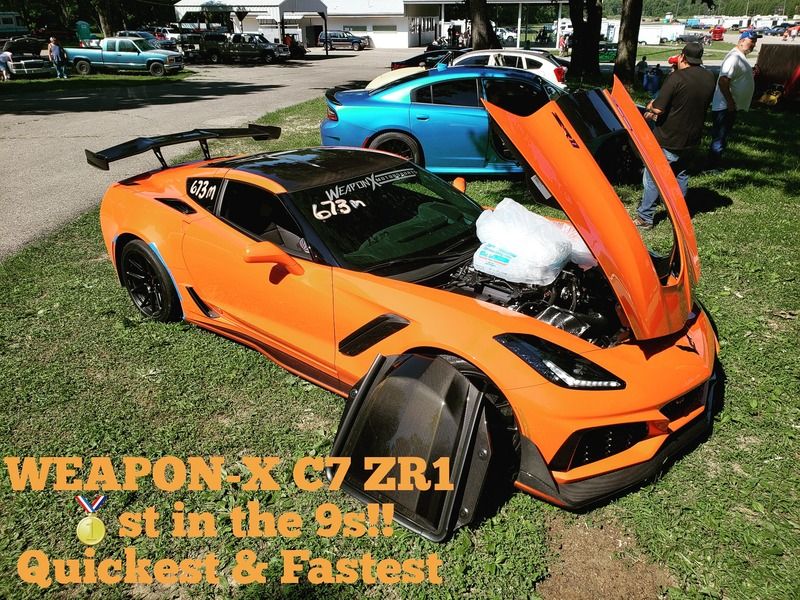
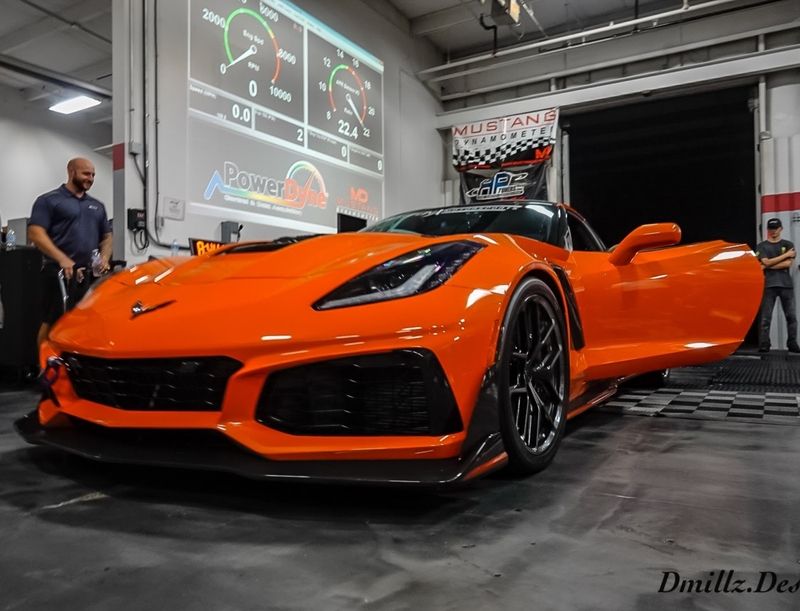

First, I put in a 160* thermostat and despite the fans not coming on till 193* still, it allows coolant to move more freely and temps in higher speeds are in the 170*s, even in hot humid mid 90s days. Consequently, my 9 second pass was ran with a half full radiator as it had an air pocket in it after the swap, so I'm eager to see how it does after. The passes were short, but I noticed the heat on the lane back climbing and thought it was pretty hot, but it wasn't till romping on interstate and the AC shut off that I realized I had a legitimate issue haha. So, we drained and rebled it and all was good!
Secondly, the biggest problem thus far is the ZR1's engine bay design in general, and while the hood is "trick", the attached cowl does NOTHING for the avid racer. The cowl traps more heat under it than you would ever imagine, thus the reason for the heat wrap on the inside. It attaches to the Supercharger, so even with the hood open, the cowl holds in a considerable amount of heat and the temps under it were astonishing! The darker carbon not only picks up the heat from below, but also picks up the radiant heat from the sun too! After shutting the car off and removing the cowl, it was 145* on the supercharger lid and the lid contains the intercooler bricks inside of it,so that heat is getting put right into the lid and thus the supercharger's coolant source. Fast forward an hour later and it was 155* under the cowl! Another hour and it was a blistering 165*!!! That was the apex before it came back down. So, we designed and milled our special manifold barrier spacer to keep the conductive heat from the engine off the lid and the intercooler bricks. We have used this on the ATSV and the car was the coolest and the second fastest in the world (to a meth addicted car lol) for the past two years since we hadn't ran it since then. This has paid off big time thus far! I am compiling data, but supercharger lid spacers have been around for awhile; however, those are usually just used to create artificial atmosphere inside the supercharger for air flow and air compression heat, but this also blocks the conductive heat!
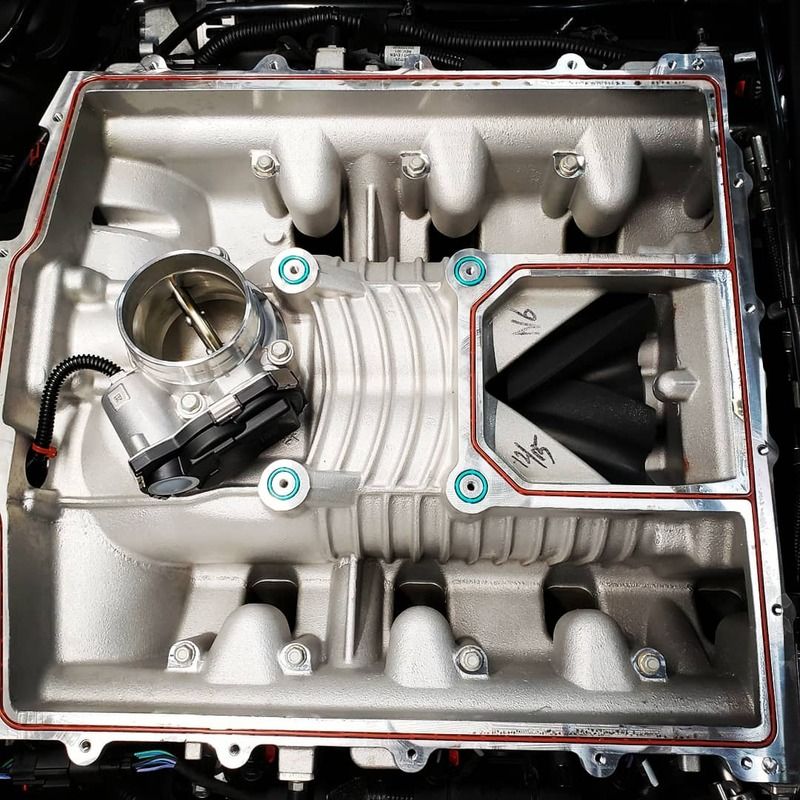
WXM Thermal Barrier's are available now! *Copyrighted and Patent Pending*
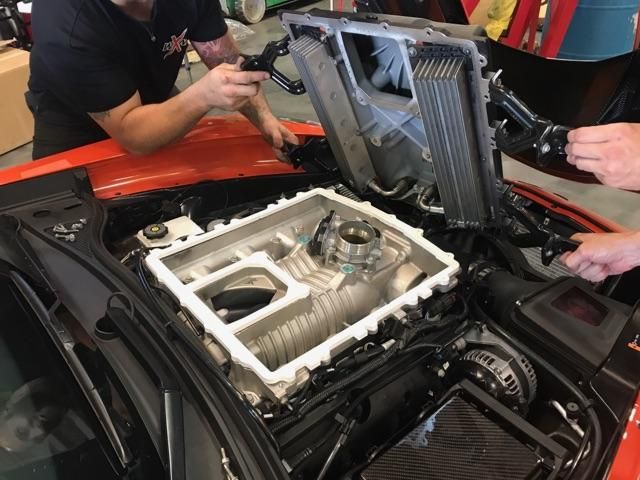

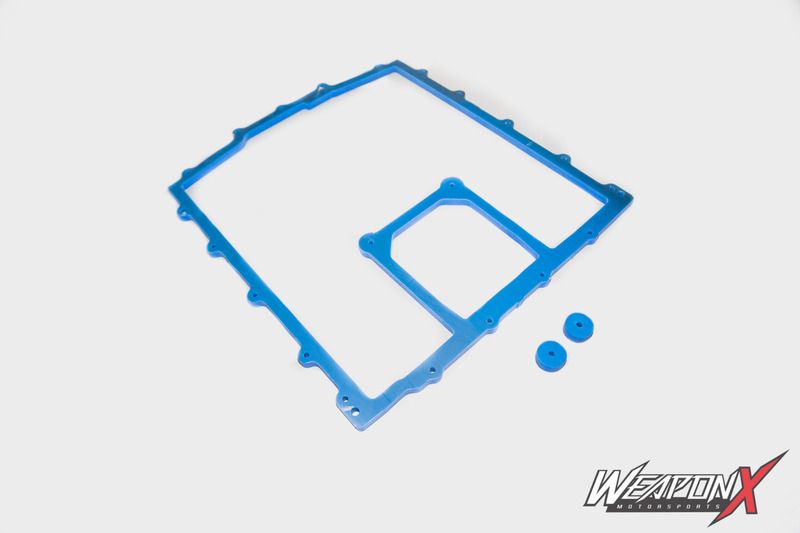
The next thing we did is model a completely new supercharger cowl with vents to extract this heat, so the entire engine bay is purging heat and when in rest the car can exhaust the heat. This is in molding now as well and will be done and in stock before the end of the year too!

Our color matched valve covers will look a lot better once we open up the sides of the cowl as well for improved PCV air flow and a catch can setup we're in the midst of!
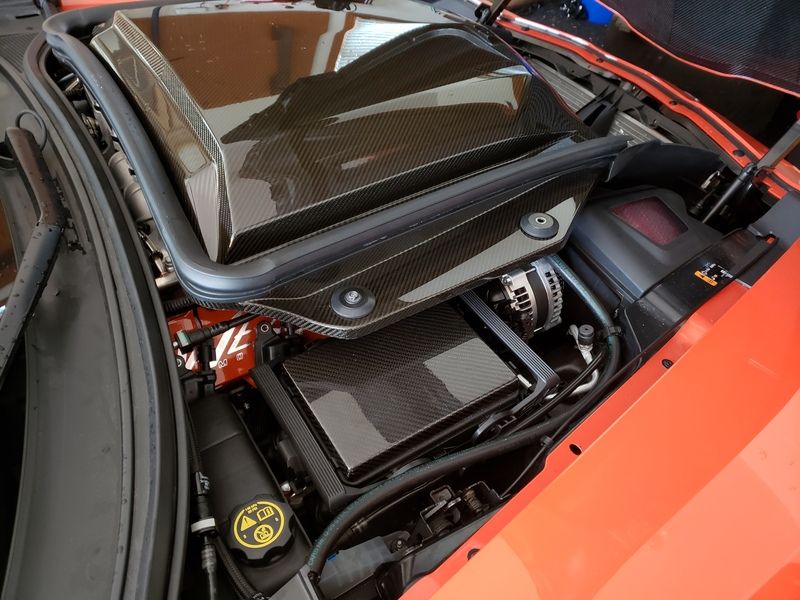
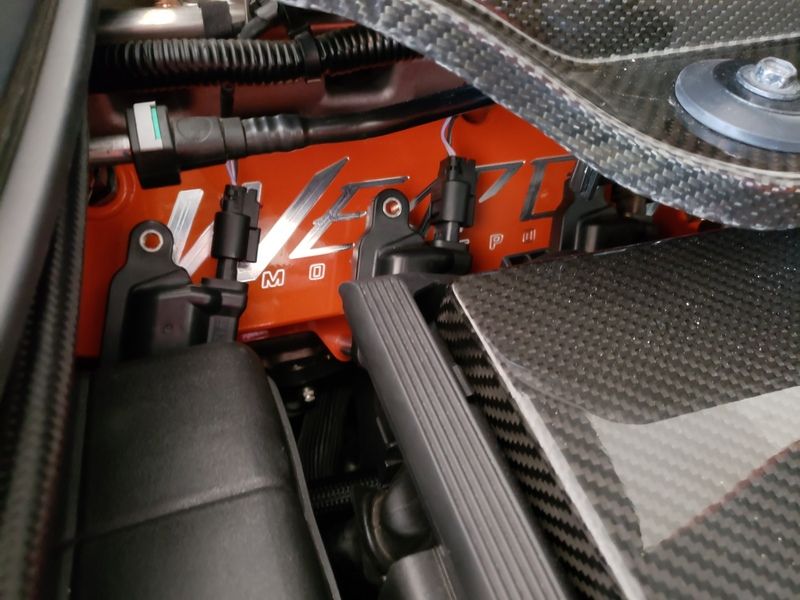

We are already in development for upgraded radiators and heat exchangers as well for better cores, more fluid, and more natural cooling. We have upgraded intercooler bricks for the LT4 and will develop them for the LT5 as well shortly too.
Lastly, the car will get our new Boost Freeze Chiller kit as we have shown 30* water temps going into the supercharger which results in 20% more timing, 9% more power, and 10% less boost due to the dense air, but before we do the max effort, I needed to gather the data and start with some simple bolt on solutions.

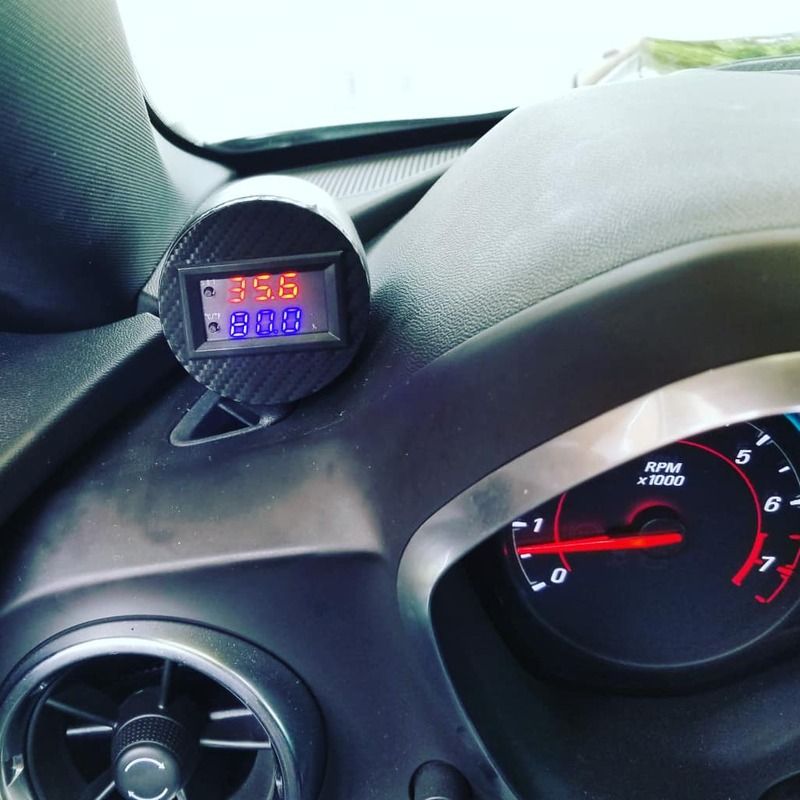
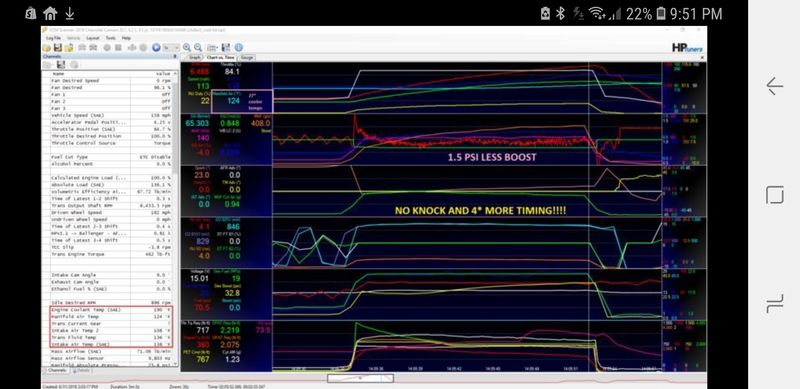

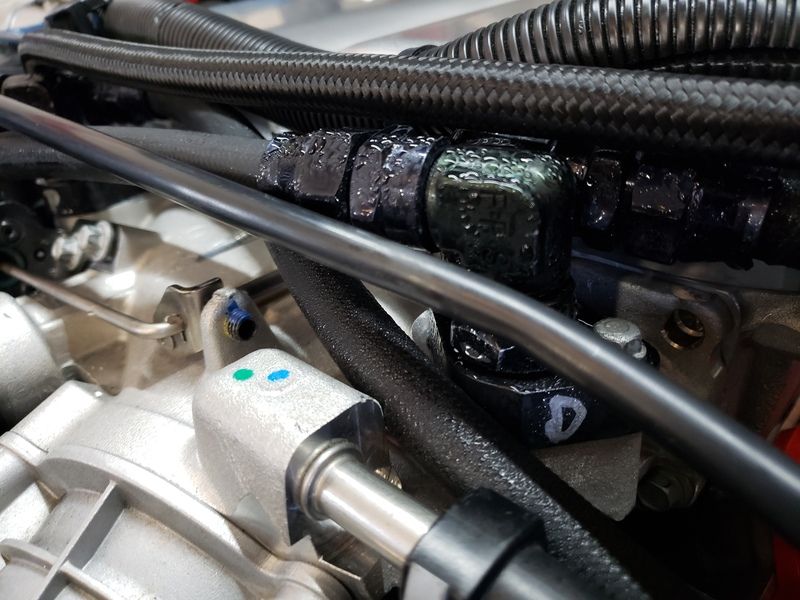
This is the stuff I love!!!
Also, our carbon ZR1 intake is nearly ready for production! This is what I used to run 9s. We're very close to rolling into production! No the Tin Man didn't lose something very special to him LOL, so don't mind the heat resistant foil, just doing some other testing related to heat
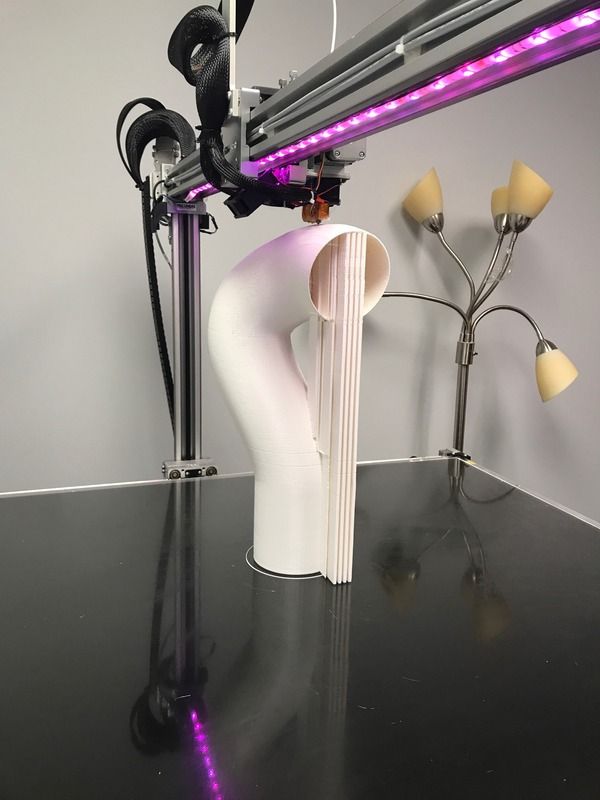
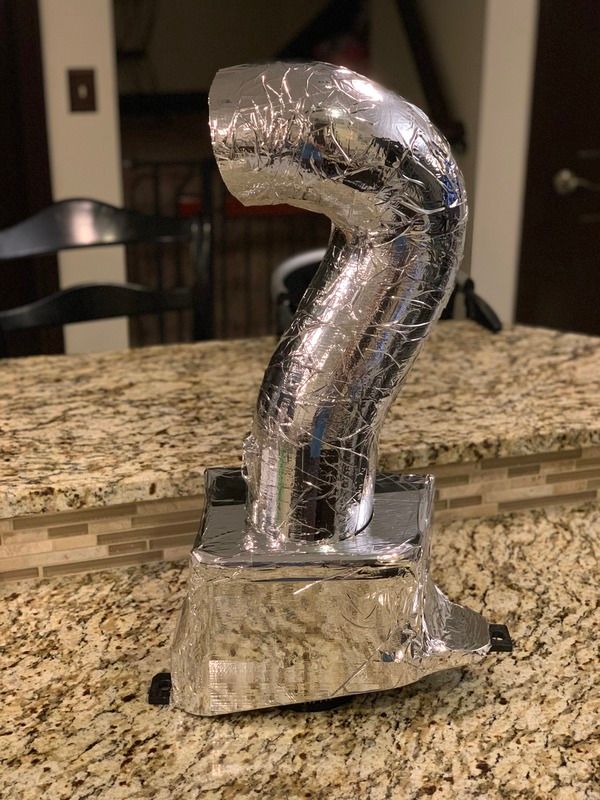
So, between all of this, the low brackets for drag racers on the ZTK wing

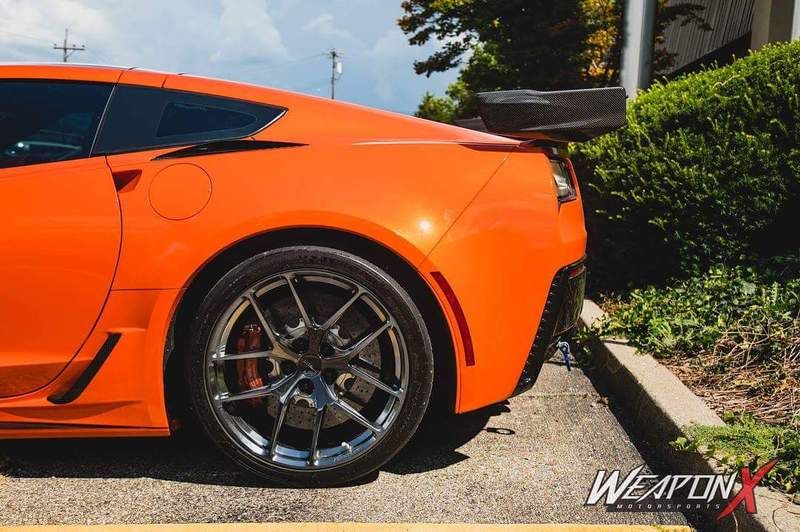
the taller brackets and bigger wing
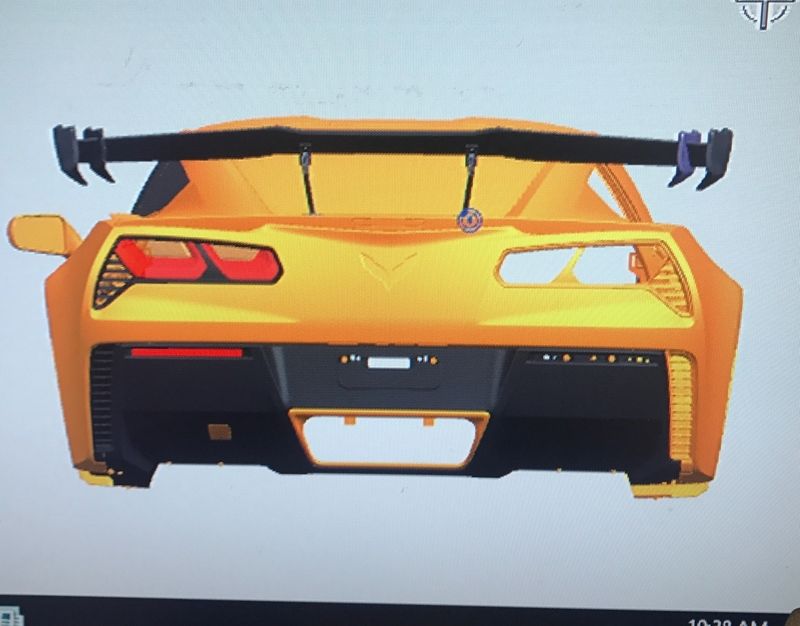
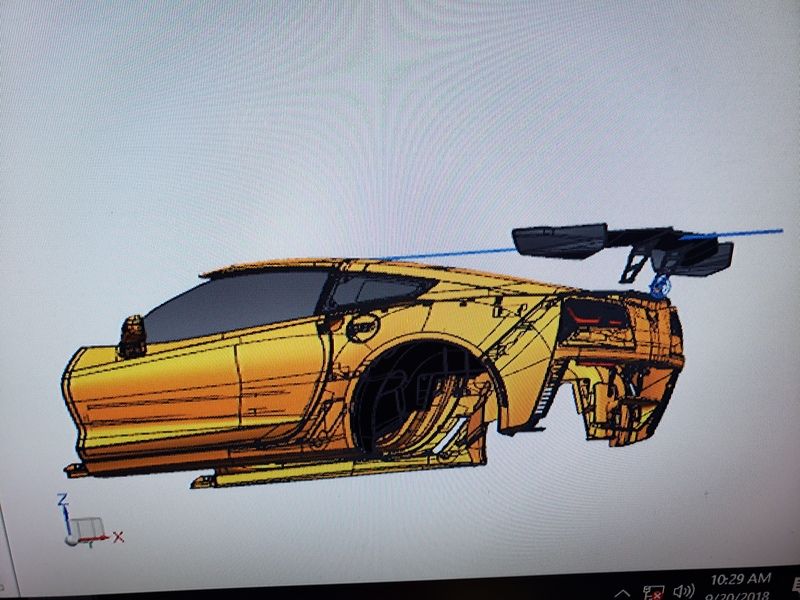
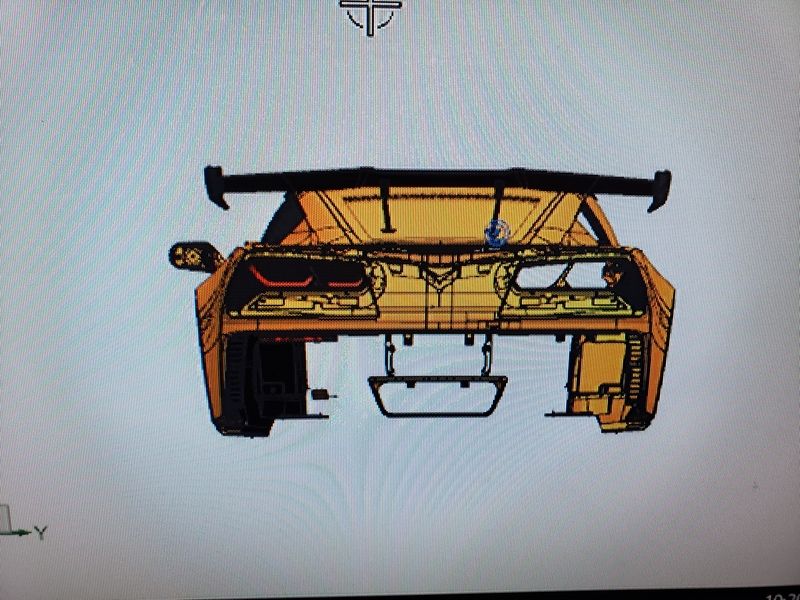
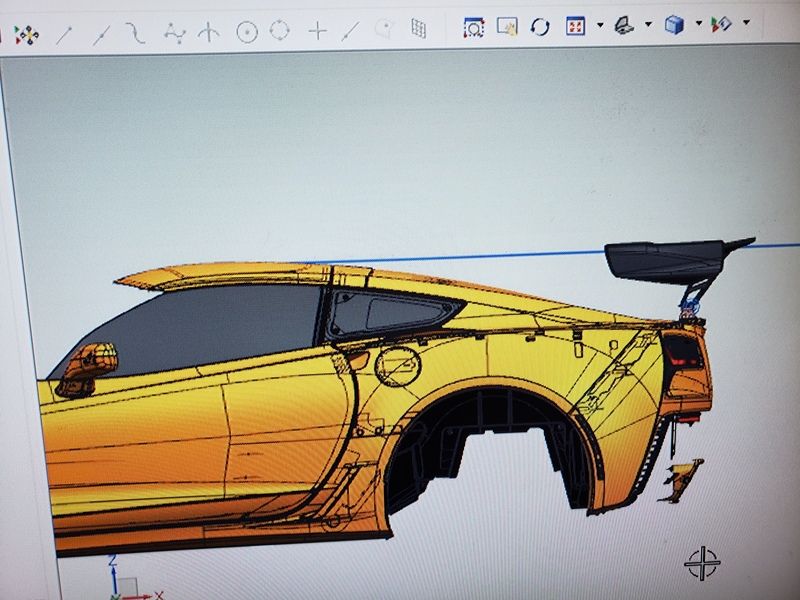
and larger splitter we're making now, I'd say we have a lil something for everyone!
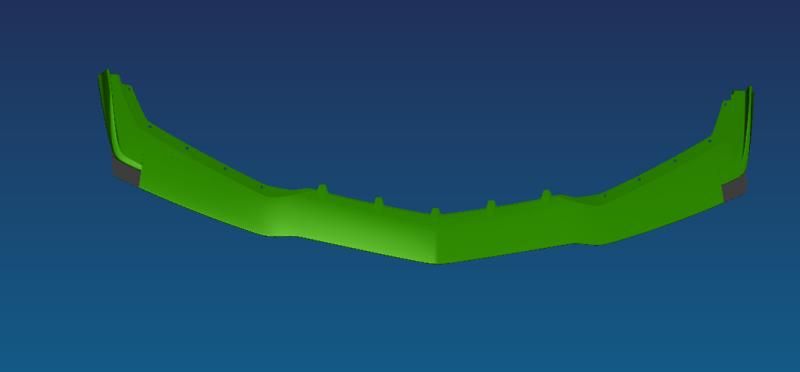



First, I put in a 160* thermostat and despite the fans not coming on till 193* still, it allows coolant to move more freely and temps in higher speeds are in the 170*s, even in hot humid mid 90s days. Consequently, my 9 second pass was ran with a half full radiator as it had an air pocket in it after the swap, so I'm eager to see how it does after. The passes were short, but I noticed the heat on the lane back climbing and thought it was pretty hot, but it wasn't till romping on interstate and the AC shut off that I realized I had a legitimate issue haha. So, we drained and rebled it and all was good!
Secondly, the biggest problem thus far is the ZR1's engine bay design in general, and while the hood is "trick", the attached cowl does NOTHING for the avid racer. The cowl traps more heat under it than you would ever imagine, thus the reason for the heat wrap on the inside. It attaches to the Supercharger, so even with the hood open, the cowl holds in a considerable amount of heat and the temps under it were astonishing! The darker carbon not only picks up the heat from below, but also picks up the radiant heat from the sun too! After shutting the car off and removing the cowl, it was 145* on the supercharger lid and the lid contains the intercooler bricks inside of it,so that heat is getting put right into the lid and thus the supercharger's coolant source. Fast forward an hour later and it was 155* under the cowl! Another hour and it was a blistering 165*!!! That was the apex before it came back down. So, we designed and milled our special manifold barrier spacer to keep the conductive heat from the engine off the lid and the intercooler bricks. We have used this on the ATSV and the car was the coolest and the second fastest in the world (to a meth addicted car lol) for the past two years since we hadn't ran it since then. This has paid off big time thus far! I am compiling data, but supercharger lid spacers have been around for awhile; however, those are usually just used to create artificial atmosphere inside the supercharger for air flow and air compression heat, but this also blocks the conductive heat!

WXM Thermal Barrier's are available now! *Copyrighted and Patent Pending*



The next thing we did is model a completely new supercharger cowl with vents to extract this heat, so the entire engine bay is purging heat and when in rest the car can exhaust the heat. This is in molding now as well and will be done and in stock before the end of the year too!

Our color matched valve covers will look a lot better once we open up the sides of the cowl as well for improved PCV air flow and a catch can setup we're in the midst of!



We are already in development for upgraded radiators and heat exchangers as well for better cores, more fluid, and more natural cooling. We have upgraded intercooler bricks for the LT4 and will develop them for the LT5 as well shortly too.
Lastly, the car will get our new Boost Freeze Chiller kit as we have shown 30* water temps going into the supercharger which results in 20% more timing, 9% more power, and 10% less boost due to the dense air, but before we do the max effort, I needed to gather the data and start with some simple bolt on solutions.





This is the stuff I love!!!

Also, our carbon ZR1 intake is nearly ready for production! This is what I used to run 9s. We're very close to rolling into production! No the Tin Man didn't lose something very special to him LOL, so don't mind the heat resistant foil, just doing some other testing related to heat



So, between all of this, the low brackets for drag racers on the ZTK wing


the taller brackets and bigger wing




and larger splitter we're making now, I'd say we have a lil something for everyone!

The following 4 users liked this post by Ben@WeaponX:
The following users liked this post:
Ben@WeaponX (09-22-2018)
#9
Drifting


Ben, Is there anything we can learn on the correct way to bleed the cooling system on the LT5?
Do you recommend adding Water Wet to the cooling system?
Thanks, Bob
Do you recommend adding Water Wet to the cooling system?
Thanks, Bob
#10
Le Mans Master


I concluded a couple if years ago with my C5 750HP Turbo a simplistic concept. All engines have a power/temperature curve. A NA's is flatter, and similarly it goes with a smaller FI engine.
Anyway, the hotter a motor runs the more it gets back in the cold. Demonstrably different it is in my car from say 70 degrees verses 35 degrees as a function of the oxygen molecules, not pulling timing, and the waste heat going out the tailpipe.
We plan on this and the ZR1 is going into the 9s 1/4 soon!
Anyway, the hotter a motor runs the more it gets back in the cold. Demonstrably different it is in my car from say 70 degrees verses 35 degrees as a function of the oxygen molecules, not pulling timing, and the waste heat going out the tailpipe.
We plan on this and the ZR1 is going into the 9s 1/4 soon!

Last edited by johnglenntwo; 09-22-2018 at 07:44 AM.
The following users liked this post:
Ben@WeaponX (09-22-2018)
#13
Safety Car


Thread Starter
Member Since: Jan 2012
Location: Cin City
Posts: 4,885
Received 481 Likes
on
317 Posts
St. Jude Donor '14

 The Chiller is seriously the coolest thing we've ever done (pun intended lol). To see the temps drop back down to normal within minutes of idling is just amazing.
The Chiller is seriously the coolest thing we've ever done (pun intended lol). To see the temps drop back down to normal within minutes of idling is just amazing.I concluded a couple if years ago with my C5 750HP Turbo a simplistic concept. All engines have a power/temperature curve. A NA's is flatter, and similarly it goes with a smaller FI engine.
Anyway, the hotter a motor runs the more it gets back in the cold. Demonstrably different it is in my car from say 70 degrees verses 35 degrees as a function of the oxygen molecules, not pulling timing, and the waste heat going out the tailpipe.
We plan on this and the ZR1 is going into the 9s 1/4 soon!
Anyway, the hotter a motor runs the more it gets back in the cold. Demonstrably different it is in my car from say 70 degrees verses 35 degrees as a function of the oxygen molecules, not pulling timing, and the waste heat going out the tailpipe.
We plan on this and the ZR1 is going into the 9s 1/4 soon!

#14
Safety Car


Thread Starter
Member Since: Jan 2012
Location: Cin City
Posts: 4,885
Received 481 Likes
on
317 Posts
St. Jude Donor '14

Does it make sense that my buddy has a 2300 on his Z06 and his car is always 5 degrees cooler when we are cruising around on the phone from car to car? Is the 2300 that much better than the 1700?
and how does the 2650 compare to the 2300? Is it negligible to go from one to the other when modding?
also relocating the A8 cooler on an LT4 from the belly and installing the aux GM rad in it's place. Is that the trick to running an a8 on track without overheating? Thanks
and how does the 2650 compare to the 2300? Is it negligible to go from one to the other when modding?
also relocating the A8 cooler on an LT4 from the belly and installing the aux GM rad in it's place. Is that the trick to running an a8 on track without overheating? Thanks
The 2650 seems worlds better than the 2300 IMO. The 2300 taps out in the 800whp range with heads/cams etc. I've never really been that impressed with the 2300s personally, even before on the LSAs. Now, the 2650 is at 800whp or about 950 BHP with an extra 3 psi on the OEM calibration (to an extent before we're manipulating the sensors) and has stock heads/cam and I really don't even think that the 2650 is working yet, despite the heat that it puts off. I believe the majority of that heat is being soaked up from below and we will see this weekend when I am doing more logging with the new lid spacer setup.
I thought the GM aux cooler was for guys who didn't have the trans cooler, but I ran a beefy Setrab cooler on mine with a thermostat and fan controlled and it was at least twice as thick as the OEM A8 trans unit.
The following users liked this post:
Ben@WeaponX (09-22-2018)
#17
Le Mans Master


Member Since: Oct 2005
Location: Metro Detroit Michigan
Posts: 7,075
Received 1,816 Likes
on
1,084 Posts

The following users liked this post:
DebRedZR1 (09-23-2018)
#18
Le Mans Master


Water Wetter is only a lubricant for the most part. Guys will use this in their heat exchanger systems when running DISTILLED water. We have issues from time to time on heat exchangers with guys trying to convert from coolant to water that are in hotter climates and they just use tap water and as a result electrolysis will occur and the heat exchanger will develop holes and leak, which isn't covered under warranty. Distilled water will keep this from happening. It's also very important to point out that you don't want to do this in the engine coolant, only the supercharger coolant as it "shouldn't" get anywhere near the boiling point vs. a hot car on the track can exceed water's boiling point, even when under pressure. So, water wetter really doesn't do much unless you're running distilled water in the hx system. I've done this in the past, but now with our chiller making sub freezing temps in the water, I will stay with a coolant blend to prevent icing up my pumps, etc.  The Chiller is seriously the coolest thing we've ever done (pun intended lol). To see the temps drop back down to normal within minutes of idling is just amazing.
The Chiller is seriously the coolest thing we've ever done (pun intended lol). To see the temps drop back down to normal within minutes of idling is just amazing.
What are you planning on? I didn't quite follow... going N/A or something to do with the temps or chiller?
 The Chiller is seriously the coolest thing we've ever done (pun intended lol). To see the temps drop back down to normal within minutes of idling is just amazing.
The Chiller is seriously the coolest thing we've ever done (pun intended lol). To see the temps drop back down to normal within minutes of idling is just amazing.What are you planning on? I didn't quite follow... going N/A or something to do with the temps or chiller?
If the lid could be made a bit taller and have the cooling tubes run through it with more flow from the intercooler pumps I think it could keep the blower case temps down and not heat soak the motor so badly
I have no doubt this engine will be cranking over 1k, I'm curious to see what direct port alchy injection could do now to also help with cooling. Even adding another MS pro with a WB and another set of injectors seems feasible as the factory tune would remain intact.
I'd also like to try putting much bigger tranny cooler on the car and perhaps adding some better fans to the existing rads. Cooling that much hp is certainly hard to do. And that big hot lump up top doesn't make it any easier.
Very exciting stuff!!
Last edited by Rkreigh; 09-23-2018 at 05:51 AM.
The following 2 users liked this post by Rkreigh:
Ben@WeaponX (09-23-2018),
johnglenntwo (09-23-2018)
#19
Moderator
Member Since: Jul 2005
Location: West MI
Posts: 27,698
Received 3,621 Likes
on
1,740 Posts
CF Banner Relay Captain
West MI & JAX/NE Florida
Events Coordinator
St. Jude Donor '11-'12-'13-'14-'15-'16-'17, '21

#20
The following 2 users liked this post by Ronstar:
Steve Garrett (09-23-2018),
timmyZ06 (10-21-2018)









 Hit the report button. Enough of it all ready.
Hit the report button. Enough of it all ready.
